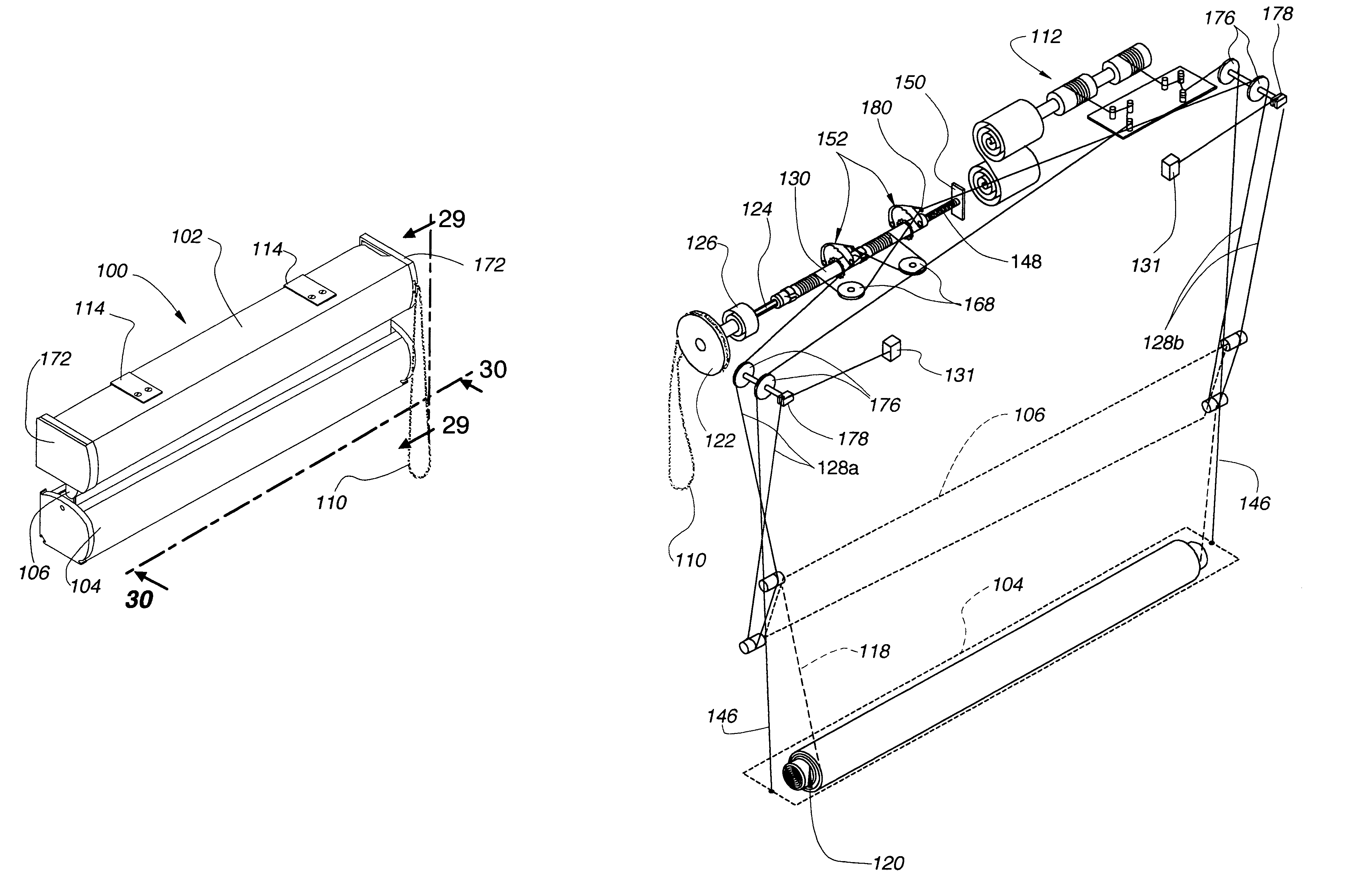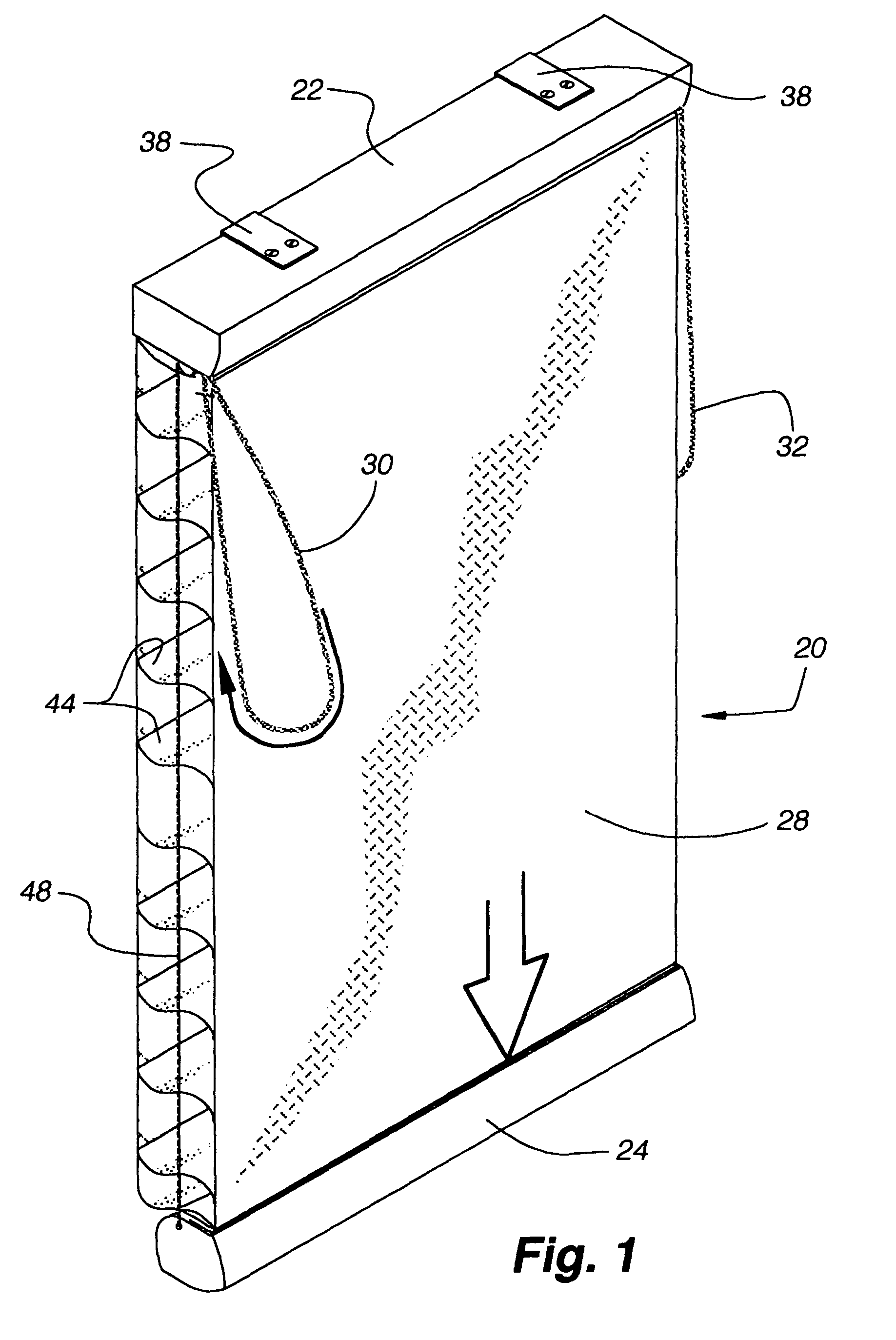Bottom-up/top-down retractable cellular shade
a retractable, bottom-up technology, applied in the direction of sliding/moving grilles, door/window protective devices, curtain suspension devices, etc., can solve problems such as blocking vision and ligh
- Summary
- Abstract
- Description
- Claims
- Application Information
AI Technical Summary
Benefits of technology
Problems solved by technology
Method used
Image
Examples
Embodiment Construction
[0113]A first embodiment of a covering 20 in accordance with the present invention is shown in FIGS. 1 through 20 and with reference to FIG. 1 can be seen to include a head rail 22, a bottom rail 24, an intermediate rail 26, a flexible fabric material or structure 28 extending between the intermediate rail and the bottom rail and operating cords 30 and 32 for operating first 34 and second 36 control systems, respectively (FIGS. 9–12) for the covering. The first control system 34 enables movement of the bottom rail vertically between a fully retracted condition of the covering as shown, for example, in FIG. 12, and a fully extended condition as shown in FIG. 1. The second control system 36 is utilized to not only tilt the intermediate rail for purposes to be described later, but to also move the intermediate rail vertically between the fully retracted position of FIG. 1 and a fully extended position (not shown) wherein the intermediate rail is positioned adjacent to the bottom rail w...
PUM
 Login to View More
Login to View More Abstract
Description
Claims
Application Information
 Login to View More
Login to View More - R&D
- Intellectual Property
- Life Sciences
- Materials
- Tech Scout
- Unparalleled Data Quality
- Higher Quality Content
- 60% Fewer Hallucinations
Browse by: Latest US Patents, China's latest patents, Technical Efficacy Thesaurus, Application Domain, Technology Topic, Popular Technical Reports.
© 2025 PatSnap. All rights reserved.Legal|Privacy policy|Modern Slavery Act Transparency Statement|Sitemap|About US| Contact US: help@patsnap.com



